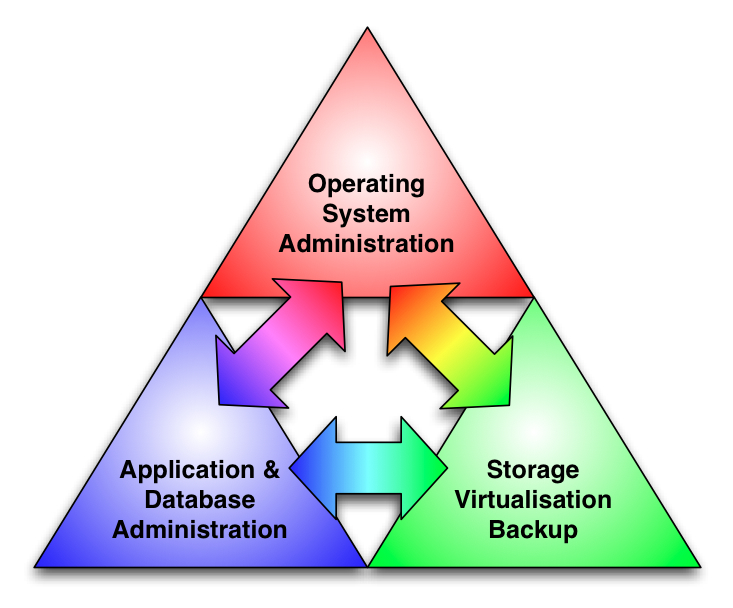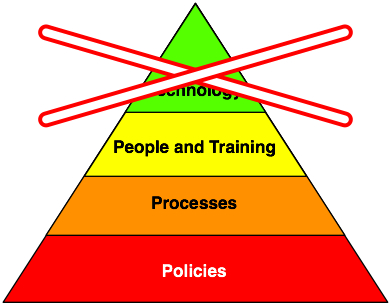EMC’s recent big backup announcements included a variety of core product suite enhancements in the BRS space – Data Domain got a substantial refresh, Avamar jumped up to v7, and NetWorker to 8.1. For those of us who work in the BRS space, it was like christmas in July*.
Anyone who has read my NetWorker 8.1 overview knows how much I’m going to enjoy working that release. I’m also certainly looking forward to getting my hands on the new Data Domains, and it’ll be interesting to deep dive into the new features of Avamar 7, but one of the discussion points from EMC caught my attention more than the technology.
Accidental architecture.
Accidental architecture describes incredibly succinctly and completely so many of the mistakes made in enterprise IT, particularly around backup and recovery, archive and storage. It also perfectly encapsulates the net result of siloed groups and teams working independently and at times even at odds from one another, rather than synergistically meeting business requirements.
That sort of siloed development is a macrocosm of course of what I talk about in my book in section 2.2.2.4 – the difference between knowledge-based and person-based groups, viz.:
[T]he best [group] is one where everyone knows at least a little bit about all the systems, and all the work that everyone else does. This is a knowledge-sharing group. Another type … is where everyone does their own thing. Knowledge sharing is at a minimum level and a question from a user about a particular system gets the response, “System X? See Z about that.” This is a person-centric group.
Everyone has seen a person-centric group. They’re rarely the fault of the people in the groups – they speak to a management or organisational failure. Yet, they’re disorganised and dangerous. They promote task isolation and stifle the development of innovative solutions to problems.
Accidental architecture comes when the groups within a business become similarly independent of one another. This happens at two levels – the individual teams within the IT arm, and it can happen at the business group level, too.
EMC’s approach is to work around business dysfunction and provide a seamless BRS experience regardless of who is partaking in the activity. The Data Domain plug-in for RMAN/Boost is a perfect example of this: it’s designed to allow database administrators to take control of their backup processes, writing Oracle backups with a Data Domain as target, completely bypassing whatever backup software is in the field.
Equally, VMware vCenter plugins to allow provisioning of backup and recovery activities from within vSphere is about trying to work around the silos.
It’s an admirable goal, and I think for a lot of businesses it’s going to be the solution they’re looking for.
I also think it’s a goal that shouldn’t need to exist. EMC’s products help to mitigate the problem, but a permanent solution needs to also come from within business change.
As I mentioned in Rage against the Ravine, a lot of the silo issues that exist within an organisation – effectively, the accidental architectures – result from the storage, virtualisation and backup/data protection teams working too independently. These three critical back-of-house functions are so interdependent of one another that there is rarely any good reason to keep them entirely independent. In small to medium enterprises, they should be one team. In the largest of enterprises there may be a need for independent teams, but they should rotate staff between each other for maximised knowledge sharing, and they should be required to fully collaborate with one another.
In itself, that speaks again for the need of a stronger corporate approach to data protection, which requires the appointment of Data Protection Advisors and, of course, the formation an Information Protection Advisory Council.
As I’ve pointed out on more than one occasion, technology is rarely the only solution:
Technology is the tip of the iceberg in an accidental architecture environment, and deploying new technology doesn’t technically solve the problem, it merely masks it.
EMC’s goal of course is admirable – empower each team to achieve their own backup and recovery requirements, and I’ll fully admit there’ll always be situations where it’s necessary, so it was a direction they had to take. That’s not to say they’re looking in the wrong direction – EMC isn’t a management consulting company, after all. A business following the EMC approach however does get a critical advantage though: breathing space. When accidental architectures have lead to a bunch of siloed deployments and groups within an organisation, those groups end up spending most of their time fighting fires rather than proactively planning in a way that suits the entire organisation. Slot the EMC product suite in and those teams can start pulling back from firefighting. They can start communicating, planning and collaborating more effectively.
If you’ve got an accidental architecture for data protection, your first stop is EMC BRS’s enablement of per-technology/team solutions. Then, once you’ve had time to regroup, your next stop is to develop a cohesive and holistic approach at the personnel, process and business function layer.
At that point … boy, will your business fly.
—
* The term “christmas in July”, if you’re not aware of it, is fairly popular in Australia in some areas. It’s about having a mock christmas party during our coldest part of the year, mimicking in some small way the sorts of christmas those in the Northern Hemisphere get every year.


